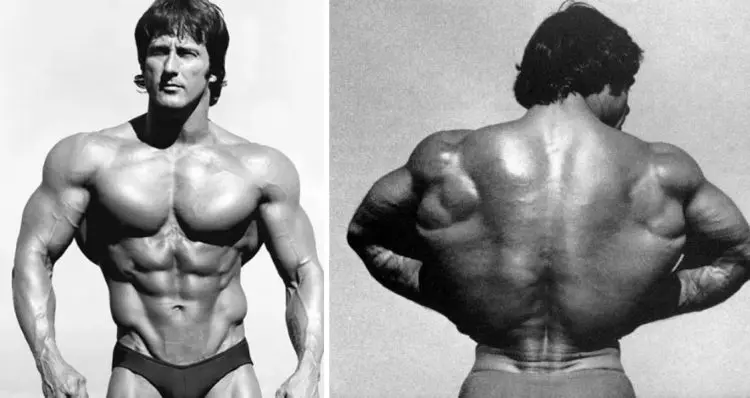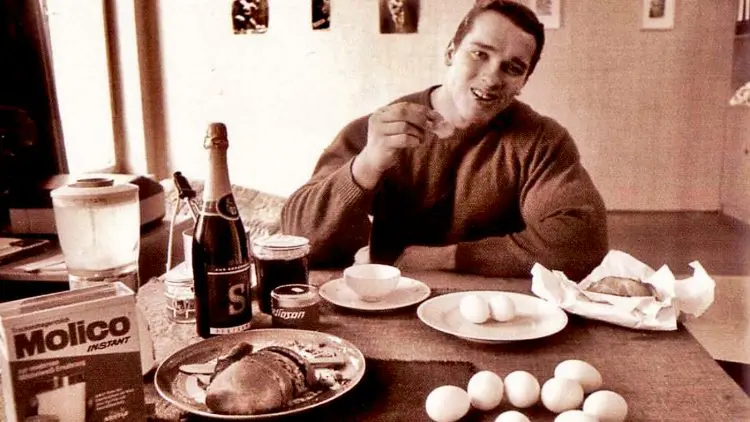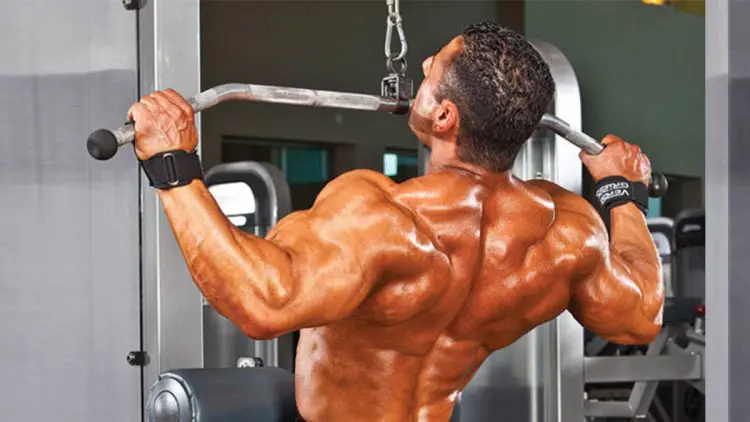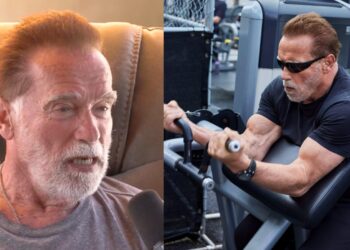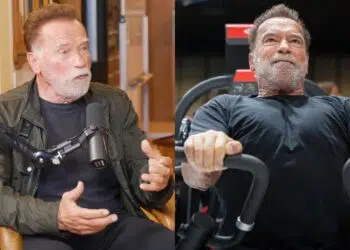There is no denying that bodybuilding has changed dramatically since the golden era of the 1960s-1980s. Back then, the competitors of the day were muscular but also looked athletic. Most had broad shoulders, narrow waists and actually appeared quite human. Their physiques were undeniably impressive, but they also looked attainable and relatable.
Guys like Frank Zane weighed in at 200lbs or less and still won the Olympia, usually beating much bigger competitors in the process.
Fast forward to the modern era, and the top bodybuilders look like they’re from another planet. They’re bigger, more ripped, and most of them would dwarf even the biggest heavyweights of yesteryear.
However, while overall muscle mass is much higher, the aesthetics are very different. Today’s bodybuilders often look blockier, have thicker waists, and their physiques are far less relatable. Thankfully, classic bodybuilding events are keeping the old aesthetic values alive.

One of the things that truly differentiates the golden era from modern bodybuilding is the V-taper. Almost all old-school bodybuilders had a V-taper, and some of them were genuinely astonishing. It’s an appealing shape that a lot of men and women would like to achieve.
In this article, we explain what the V-taper is and how to achieve one.
Level Up Your Fitness: Join our 💪 strong community in Fitness Volt Newsletter. Get daily inspiration, expert-backed workouts, nutrition tips, the latest in strength sports, and the support you need to reach your goals. Subscribe for free!
What Is A V-Taper?
A V-taper describes the combination of broad shoulders, wide lats, and a narrow waist. Think of an upside-down pyramid. The more significant the difference between your shoulder and waist circumference, the more pronounced your V-taper will be.
Check out these examples of classic V-tapers:
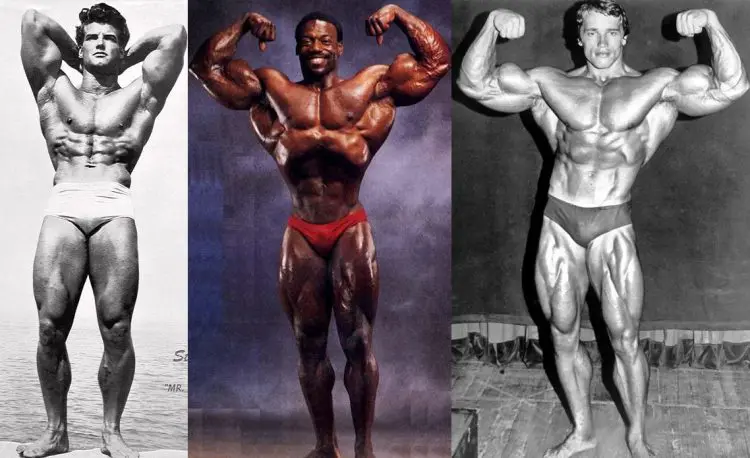
In order to create a V-taper, there are three muscle groups that you need to prioritize:
Deltoids – known as your delts for short, these muscles cap your shoulders like football pads. Well-developed shoulders give your upper body its width, so they play a crucial part in sculpting your V-taper.
There are three deltoid heads: the anterior (front), posterior (rear), and medial (middle). All three play a part in your shoulder size, but it’s the medial delts that have the biggest impact on upper body width.
Latissimus dorsi – known as your lats for short, this muscle is located on the side of your upper back and draws a line from your armpits down toward your waist. Well-developed lats give your upper back more width and are visible from the front and the back.
Core – core is the collective name for the muscles that encircle your waist. A lean, narrow waist makes your upper body look wider. This means you need to train your core to make your waist tighter but also reduce your body fat to make it more defined.
While the deltoids, lats, and core are the most important muscles for a V-taper, that doesn’t mean you should forget about training your chest, arms, or legs. A V-taper combined with plenty of overall muscle mass is much more impressive.
Nutrition for A V-Taper
While training is crucial for sculpting your V-taper, nutrition is every bit as important. Losing fat will invariably shrink your waist, making your upper body look even wider. In contrast, if you are carrying a lot of fat and your waist is big and blocky, you may not have much of a v-taper at all.
So, to create your V-taper, it’s time to start cleaning up your diet and shedding that unwanted fat. As you lose weight, your waist should shrink, and your V-taper will become more noticeable.
It’s beyond the scope of this article to give you a diet to follow, but we can provide you with some tips for losing fat while maintaining muscle mass.
1. Create a calorie deficit
Using an online TDEE calculator, work out your total daily energy expenditure (TDEE) and then subtract 500 calories from this number. That’s how much you need to eat to lose fat and get lean. Be prepared to change your calorie intake based on your progress – 500 calories is just a handy place to start, and you may need to adjust your intake up or down to get the results you want.
2. Consume one gram of protein per pound of bodyweight
Using a food tracking app, make sure you consume around one gram of protein per pound of body weight (or about two grams per kilo). Not only will this help keep you feeling full, eating protein may increase your metabolic rate, so you burn fat faster. But, most importantly, eating enough protein will help prevent the muscle loss that often accompanies a fat-reducing diet.
Tip: Calculate your daily protein intake.
3. Eat clean 90% of the time
Eating clean means chowing down on natural foods and cutting back on processed and junk food. Clean foods are generally higher in vitamins, minerals, and fiber, more filling, but lower in calories than foods that have been heavily processed.
To determine if a food is clean, just ask yourself whether you’d be able to find it out in nature. For example, chicken is a clean and natural food, whereas donuts are not. After all, donuts do not grow on trees!
If you eat clean most of the time, you can afford to have the occasional junk food snack or cheat meal. This doesn’t mean you are free to pig out and binge every couple of days. Instead, you can have a modest amount of junk food without feeling guilty about it or sabotaging your progress.
Level Up Your Fitness: Join our 💪 strong community in Fitness Volt Newsletter. Get daily inspiration, expert-backed workouts, nutrition tips, the latest in strength sports, and the support you need to reach your goals. Subscribe for free!
4. Try carb and calorie cycling
You’ll lose fat faster if you eat a little less on non-training days. After all, if you are mostly sedentary between workouts, you don’t need as much energy. Try cutting a couple of snacks from your diet on non-training days to speed up fat loss.
However, take care not to cut protein; you still need one gram per pound/two grams per kilo, even on rest days. Instead, cut carbs as, on non-workout days, you don’t need the fast-acting energy that carbs provide.
Tip: Use carb cycling calculator.
5. Get plenty of sleep
While sleeping more isn’t a nutritional strategy, it’s still something that you need for your V-taper. Too little sleep can interfere with fat burning and muscle building and could also increase insulin resistance, which is linked to abdominal fat storage. Try to get at least eight hours of sleep per night. This may mean you need to go to bed earlier, but that’s the price you have to pay for building the body of your dreams.
V-Taper Training Program
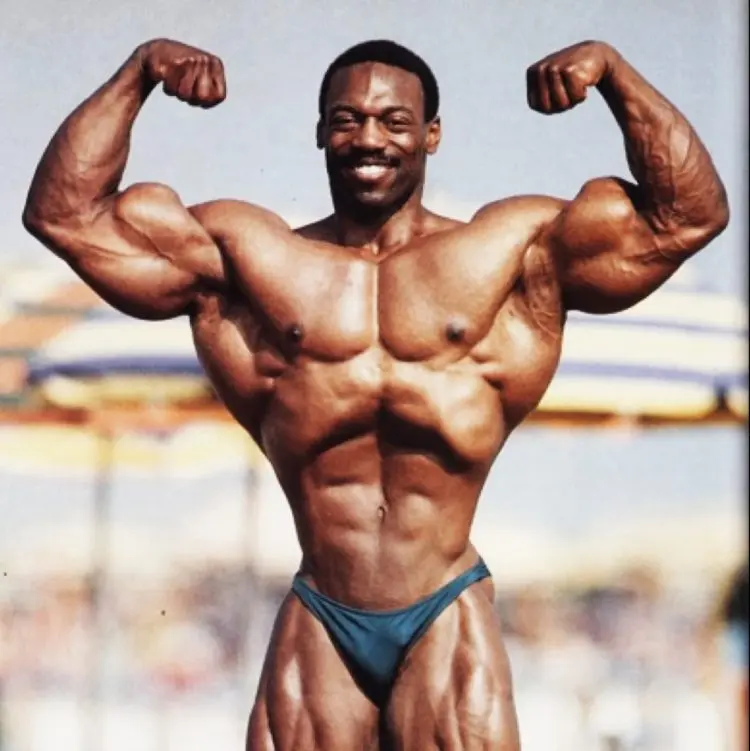
This workout is designed to make your upper body wider while tightening up your waist. Do it once or twice a week as part of a split routine. Remember, you need to train the rest of your body to create the most aesthetically pleasing shape possible. Make sure you also train your legs, chest, and arms over the course of the week, for example:
- Monday – Legs
- Tuesday – V-taper workout
- Wednesday – Rest
- Thursday – Chest
- Friday – Arms
- Saturday – V-taper workout
- Sunday – Rest
Before you start this workout, make sure you prepare your muscles and joints by warming up. This will improve your workout performance and also reduce your risk of injury. Start off with 5-10 minutes of cardio, followed by some dynamic flexibility and mobility exercises for the muscles and joints you are about to use.
| V-Taper Training Program | ||||
| Exercise | Sets | Reps | Recovery | |
| 1 | Dumbbell Y press | 4 | 10-12 | 90 seconds |
| 2 | Cable lateral raise | 3 | 8-10 | 90 seconds |
| 3 | Cuban press | 2 | 6-8 | 90 seconds |
| 4 | Pull-ups | 4 | AMRAP | 90 seconds |
| 5 | 1 ½ rep lat pulldown | 3 | 8-10 | 90 seconds |
| 6 | Yates row | 2 | 6-8 | 90 seconds |
| 7 | Single-arm farmer’s walk | 3 | 40-60 seconds | 60-seconds |
| 8 | Stomach vacuum | 3 | 4-6 | 60 seconds |
AMRAP = As Many Reps as Possible – just rep-out to failure.
Best V-Taper Exercise:
Get the most from this workout by doing all the exercises correctly. Proper form will make each exercise more productive and safer. Take a moment to study these instructions before attempting this workout.
1. Dumbbell Y press
The dumbbell Y press is an overhead press variation that increases medial deltoid activation. This exercise will feel a little unusual, and you won’t be able to go very heavy, but it’s an effective move for increasing shoulder width.
How to do it:
- Seated or standing, hold a dumbbell in each hand and raise them to shoulder level, palms facing forward. Brace your core and pull your shoulders down and back. Look straight ahead.
- Press the weights up and out so your arms form a Y-shape.
- Lower the weights back to your shoulders and repeat.
2. Cable lateral raise
Cable lateral raises target your medial deltoids. Using a cable means your muscles are under almost constant tension, making this exercise potentially more effective than the same move done with dumbbells.
You can do this exercise with one arm, or using both arms at the same time as preferred.
3. Cuban press
Legend has it that the Cuban press was invented by Cuban bodybuilders and weightlifters. It’s a total shoulder exercise that hits all three deltoid heads at the same time. It keeps your deltoids under near-constant tension, making it an excellent pumping exercise.
How to do it:
- Stand with your feet about shoulder-width apart and hold a dumbbell in each hand. Bend your knees slightly for balance, brace your abs, and pull your shoulders down and back.
- Bend your arms and pull the dumbbells up the side of your body until your upper arms are parallel to the floor.
- Rotate the dumbbells forward and up to level with your ears.
- Press the weights up and overhead.
- Reverse the motion and then repeat.
- This exercise can also be done using a barbell.
4. Pull-ups
There aren’t many exercises that are more effective than pull-ups for adding width to your lats. Using an overhand, wider-than shoulder-width grip increases lat activation. Focus on leading with your elbows and pulling your chin up above the height of the bar. Do not crane your neck; squeeze your shoulders down and back and lift your chest instead.
Check out this detailed guide to make sure you do pull-ups the right way!
5. 1 ½ rep lat pulldown
Lat pulldowns are a well-known lat exercise. The 1 ½ method increases time under tension, making them even more lat-centric. Focus on flexing your lats as hard as you can to make this exercise even more effective.
How to do it:
- Grip the bar with an overhand, slightly wider than shoulder-width grip. Sit down on the machine with your thighs under the leg restraints. Lift your chest and pull your shoulders down and back.
- Leading with your elbows, bend your arms and pull the bar down to the top of your chest.
- Extend your arms until the bar is level with the top of your head.
- Pull the bar back down to your chest.
- Extend your arms all the way and repeat.
Related: Best Cable Back Exercises.
6. Yates row
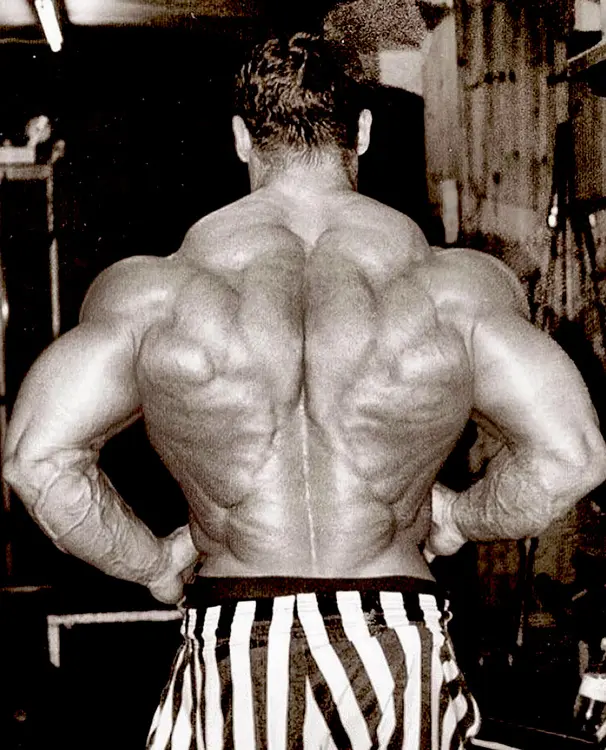
The Yates row is a powerful lat exercise. Invented by and named after bodybuilding legend and six-time Mr. Olympia winner Dorian Yates, this exercise will pack slabs of muscle onto your entire back. Yates had one of the best backs in bodybuilding history, and despite being a heavyweight, had a superb V-taper. This exercise worked for him, and it’ll work for you too.
Learn how to do Yates rows here.
7. Single-arm farmer’s walk
The single-arm farmer’s walk is a simple but effective core exercise. It’s especially tough on your obliques, which are your waist muscles. Combined with low body fat, well-developed (but not blocky) obliques will really light up your V-taper.
How to do it:
- Hold a heavy kettlebell or dumbbell in one hand. Brace your abs and hold your torso perfectly upright.
- Without leaning to the side, go for a walk around your training area. Continue until you feel your grip starting to weaken.
- Put the weight down before you drop it, switch hands, and repeat.
- Use a weight that takes you close to failure in 40-60 seconds.
8. Stomach vacuum
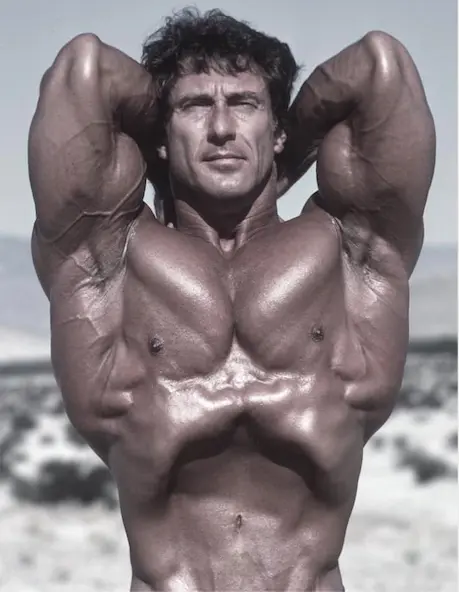
Your final V-taper exercise is an old-school classic. Golden-era bodybuilders used to do this move in the belief that it would make their waists smaller. While skeptics don’t think that such a thing is possible, the sheer number of amazing V-tapers at the time suggests that this exercise really does work.
How to do it:
- Seated or standing in good posture, exhale fully.
- Pull your stomach in, imagining you are trying to touch your spine with your belly button.
- Try to breathe normally as you keep your abdomen pulled in.
- Relax your abs, and repeat.
- Increase the length of the hold as you get stronger. 5-10 seconds is a good place to start. Advanced exercisers may work up to 30, 45, or even 60 seconds.
Find out more about this exercise here.
Read more:
- How to Do The Stomach Vacuum Exercise
- Utilize This One Exercise To Reduce The Size of Your Midsection
- Exercises To Enhance The Aesthetics of Your Waist!
How to Build a V-Taper – Wrapping Up
Our tried and tested V-taper program is designed to make your shoulders and lats wider and your waist narrower. However, you’ll need to pay as much attention to your diet as you do your workouts to sculpt the perfect V-taper. If you are overweight and carrying too much fat around your abdomen, your V-taper will not be as impressive.
It’s also worth noting that not everyone has the genetics to build a show-stopping V-taper – some people naturally have a wider waist, even when they’re lean. That said, if you work hard and increase your upper body width, you can still create the illusion of a smaller waist.

